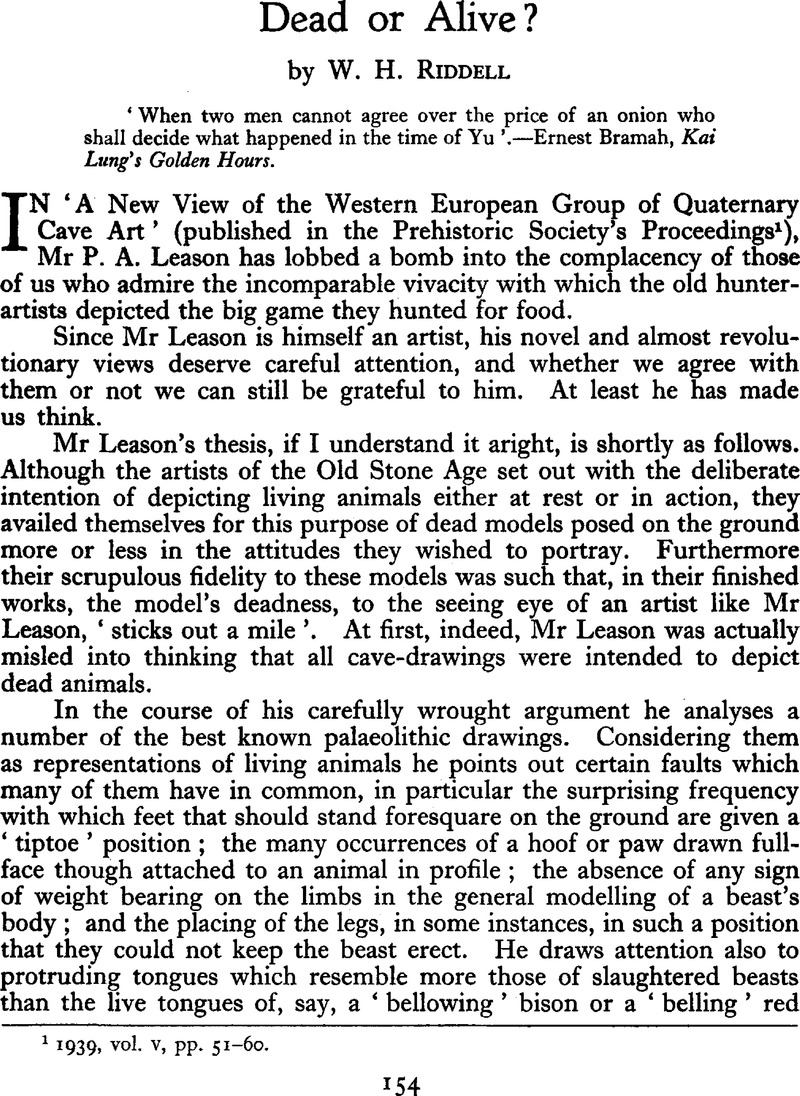No CrossRef data available.
Article contents
Abstract

- Type
- Research Article
- Information
- Copyright
- Copyright © Antiquity Publications Ltd 1940
References
1 1939, vol. v, pp. 51–60.
2 A summary is always unfair to an author’s views. I have done my best with the space at my disposal, but I would beg readers to study Mr Leason’s own words and illustrations in the Prehistoric Society’s Proceedings. They are of great interest.
3 There may have been some slight winter activity. Professor Sollas in his Ancient Hunters (fig. 318) reproduces an engraving on a bone-pendant from St. Marcel which looks very like a sledge. There is however no evidence that either dogs or reindeer had yet been broken to harness. Also we might, very doubtfully, guess that the two diamondshaped objects above the Lorthet group of deer are snowshoes. This is clearly a late autumn scene. The conjunction of fully antlered stags with water full of salmon indicates as much. It is just possible these stags were meant to be swimming a river : but it would be too fanciful to regard the two snowshoes (?) as a date—Snowshoe Time, i.e. Beginning of Winter.
4 Mr Leason points out that the backward-turned head of the rear stag in the Lorthet Group could be arranged on the ground for model purposes by using the antlers as a prop and he gives a photograph of a dead sambur so posed. This is true enough ; but the backward-turned head of the equally famous recumbent bison at Altamira could not be arranged this way. A bison’s horns point forwards.




